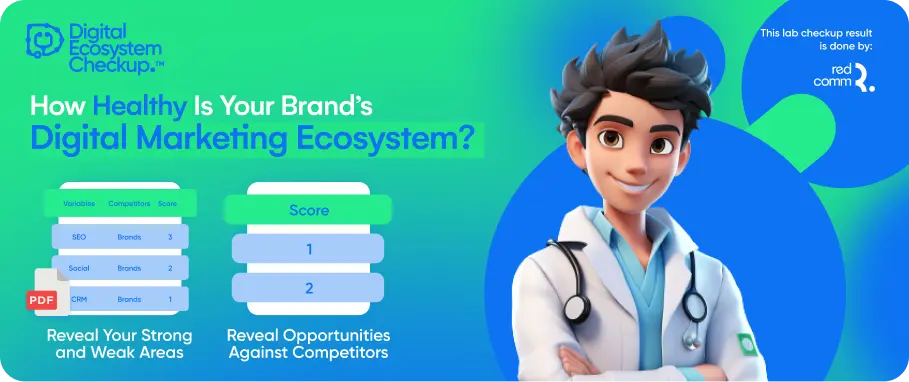The world of influencers is vast, and the potential for partnerships may be even greater than you realize.
A Guide to Discovering New Niches for Your Influencer Program

Expanding your horizons can lead to discovering exceptional collaborators, ones your competitors haven't tapped into yet and who won't break the bank.
Let's embark on a journey to explore and evaluate which influencer niches could be the perfect fit for your brand.
Drawing insights from industry experts and successful marketing campaigns, we'll navigate the terrain of influencer selection with confidence.
1. Establish Audience Guardrails
While we aim to broaden our pool of potential influencers, it's essential to maintain certain criteria for collaboration. Two fundamental guardrails should guide your influencer selection process:
- Target demographic alignment: Partner with influencers who resonate with your target audience, both in demographics and geographical location.
- Authentic engagement: Prioritize influencers who have built trust and credibility with their audience through meaningful interactions and quality engagement metrics.
Notably, this excludes faceless accounts such as meme pages or pet profiles, emphasizing the importance of authentic human connections in influencer partnerships.
With these guardrails in place, any influencer niche becomes viable as long as they meet these criteria.
2. Brainstorm Relevant Influencer Niches
Now, let's delve into identifying potential influencer niches that align with your brand's objectives. Here are four strategic angles to spark inspiration:
Audience hobbies: Consider the interests and hobbies of your target demographic. Whether it's running, gaming, or cooking, seek influencers whose content resonates with these passions.
Life stage alignments: Explore how different life stages correlate with your product or service. For instance, if you're in the furniture business, individuals who have recently moved homes represent a prime audience segment.
Look for influencers who cater to this transition, perhaps through content related to homeownership or interior design.
Brand values: Aligning with influencers who share your brand's values can deepen audience connections. For example, if sustainability is a core value, seek out influencers championing eco-friendly lifestyles.
These partnerships can enhance brand authenticity and resonate with socially conscious consumers.
Product benefits: Identify influencers whose audience stands to benefit from your product or service. For instance, a company offering healthy meal prep solutions may target health enthusiasts or busy parents seeking convenience without compromising nutrition.
While brainstorming with your team, generate a list of potential niches but prioritize testing those with the highest confidence levels. Select 2-4 niches to invest time and resources in testing thoroughly.
3. Brainstorm How to Identify Influencers in Those Niches
Picture this: you have a laundry list of potential influencer niches. But how do you pinpoint the right influencers within these realms?
Enter the power of hashtags and bio keywords. Take, for instance, the realm of gardening. A simple search using relevant hashtags or bio mentions of "gardening" can unveil a plethora of potential influencers.
Sure, this isn't the only approach, but it's undoubtedly one of the simplest and most effective ones.
Begin by compiling a list of hashtags and keywords associated with your target influencer niches. Keep it simple, no need to overcomplicate things at this stage.
Once armed with your list, you can embark on your exploration either by scouring Instagram or TikTok directly or by utilizing influencer search tools.
Remember, it's all about starting somewhere. Don't overthink it; jot down a few ideas and dive in.
As you navigate through this process, you'll stumble upon new insights through trial and error.
4. Test The Water
Armed with your curated list of niches, it's time to embark on the exhilarating journey of testing collaborations.
But here's the burning question: how much of your influencer budget should be allocated to these experimental niches versus the tried-and-tested ones?
In the nascent stages of your program, consider allocating a larger chunk, around 70% to testing, with the remaining 30% reserved for safer bets.
As your program matures and certain niches prove their worth, you can gradually shift the balance, perhaps settling at a 30% testing and 70% safer bets ratio.
Think of it as having a dedicated R&D budget, aimed at uncovering new partners and niches that consistently deliver results.
But hold your horses, embarking on uncharted waters comes with its fair share of uncertainties.
It's crucial to manage expectations, especially when venturing into unexplored territories. Fiona Macpherson, leading a team of influencer marketers at Wild, underscores the importance of setting clear expectations with leadership.
Not every partnership will yield groundbreaking results, and that's perfectly okay. Embrace the learning curve, and let each collaboration guide you towards refined strategies and fruitful partnerships.
Remember, the person steering the ship, the one knee-deep in testing and experimentation often develops an intuitive knack for influencer selection.
Gut feeling, often overlooked, can be a powerful compass in navigating this ever-evolving landscape.
In essence, unlocking the full potential of influencer partnerships requires a blend of strategic planning, experimentation, and an unwavering trust in your instincts.
DISCOVER MORE OF WHAT MATTERS TO YOU
RELATED TOPIC



